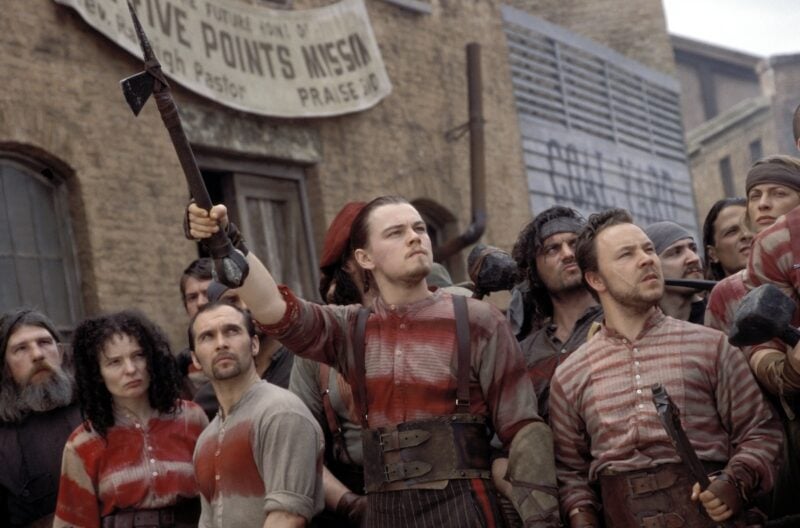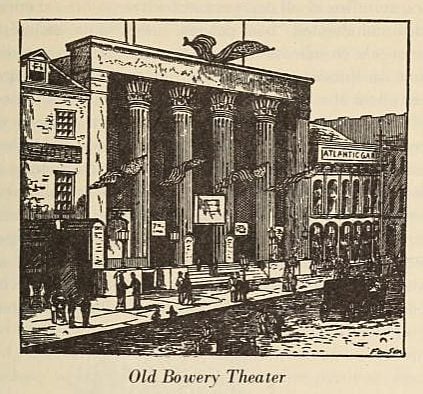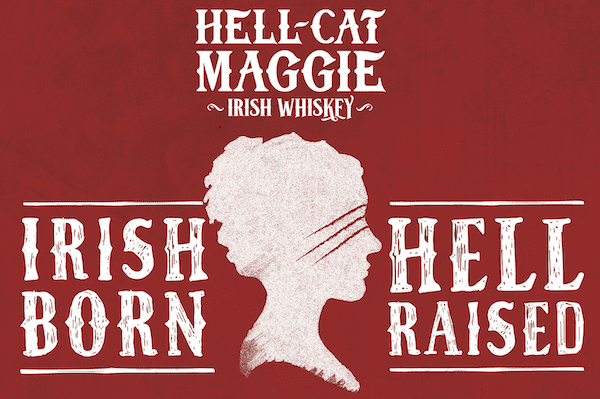The Mayhem of Hell-Cat Maggie in New York City

A scene from the 2002 movie, “Gangs of New York,” portrays the character of Hell-Cat Maggie, second from left. (Picture Alliance/DPA/AP Images)
Updated August 21, 2024
May 1, 2022 ~ By Shari Rose
A figure of American legend, Hell-Cat Maggie was a fierce member of the Dead Rabbits gang whose terrifying fighting style was immortalized in the 1928 book, “The Gangs of New York”
Hell-Cat Maggie is a character of American folklore who had a vicious reputation for tearing apart rival gang members in the streets of New York City during the 1840s. Though she was not a real person, the long-standing mythos surrounding Maggie speaks to the cultural influence that these gangs had on the city as whole. A street fighter who came from one of the poorest neighborhoods in the city and aligned herself with the Dead Rabbits gang, Hell-Cat Maggie would strike fear into the hearts of her adversaries before attacking by letting out her signature battle shriek, as described by Herbert Asbury’s “The Gangs of New York.”
Hell-Cat Maggie Joins the Dead Rabbits Gang
Throughout most of the 19th century, pockets of New York City were overwhelmed by gangs that controlled some of the most impoverished parts of the city. With little access to resources that would provide them a better quality of life, many unemployed and desperate New Yorkers turned to the rough lifestyle these gangs had to offer in neighborhoods like Five Points, the Bowery, and the Fourth Ward. Mostly comprised of European immigrants, these gangs typically engaged in petty theft and sold their loot on the black market for a profit. They also participated in massive brawls against other gangs in the city.
- More stories: Gallus Mag: New York’s Most Brutal Bouncer in 1860s
- More stories: The Legend of Sadie the Goat in New York City
Two gangs that were locked in a longstanding and violent feud were the Dead Rabbits and Bowery Boys. These rival gangs solved their disputes with brutal street fights that lasted hours, sometimes even days. Occasionally, women got involved in these skirmishes by providing ammunition to fighters, but they usually stayed away from the center of the fight. However, Hell-Cat Maggie operated differently than most other women.

Illustration of the Old Bowery Theater in Five Points, where Hellcat Maggie frequently fought alongside the Dead Rabbits gang against members of the Bowery Boys. (Source)
With her teeth filed to sharp points and long, brass nails attached to her fingers, Hell-Cat Maggie fought alongside the Dead Rabbits during these brawls against the Bowery Boys and other gangs. It’s believed she screamed a fearsome battle cry before running into the fray to bite, stab, and claw her adversaries to shreds.
Herbert Asbury described the fear that this mythical fighter delivered to her rivals in his 1928 novel, “The Gangs of New York.” When Hell-Cat Maggie entered the fight, she “screeched her battle cry and rushed biting and clawing in the midst of opposing gangsters, even the most stout-hearted blanched and fled,” wrote Asbury.
- More stories: 1920s Flagpole Sitting: The Legacy of Alvin “Shipwreck” Kelly
- More stories: How the Hatpin Panic Changed 20th Century Gender Politics
The Myth of Hell-Cat Maggie in Popular Culture
Hell-Cat Maggie is known today for her uncanny ability to cause hell-raising acts of mayhem. In the 2002 film, “Gangs of New York,” her character is depicted as a terrifying-looking street fighter with sharp teeth and brass nails who charges into a massive street brawl. In one scene of the movie, she tears off the ear of an unfortunate opposing gang member, which is likely a reference to Gallus Mag, a real-life, six-foot-tall bouncer known for biting the ears off men and women who were foolish enough to challenge her to a fight.

Actress Cara Seymour, who portrayed Hell-Cat Maggie in the 2002 film “Gangs of New York,” appears at the Mann Village Theater in Los Angeles. (AP Photo/Damian Dovarganes)
This master of mayhem’s likeness lives on other forms of popular culture as well, including as the character of “Hellkat Maggie” who appears in season 2 of the television show, “Our Flag Means Death.” She also is heavily featured in a whiskey brand from Phillips Distilling Co called Hell-Cat Maggie Irish Whiskey.

The branding for Hell-Cat Maggie Irish Whiskey. (Source)
The product description for this whiskey says it’s made for for those who “who defy convention and do things their own, rebellious way,” just like Hell-Cat Maggie. Though she may not have really lived in the way that was described by Herbert Asbury, the spirit of this rough-and-tumble New York City gangster whose ferocity exceeded that of the men she fought alongside, lives on.
- More stories: The Triumphs of Edward Gardner at the 1928 Bunion Derby
- More stories: Esther Jones: Betty Boop’s Original Influence
- More stories: The Economic Power of a Spinster






0 Comments